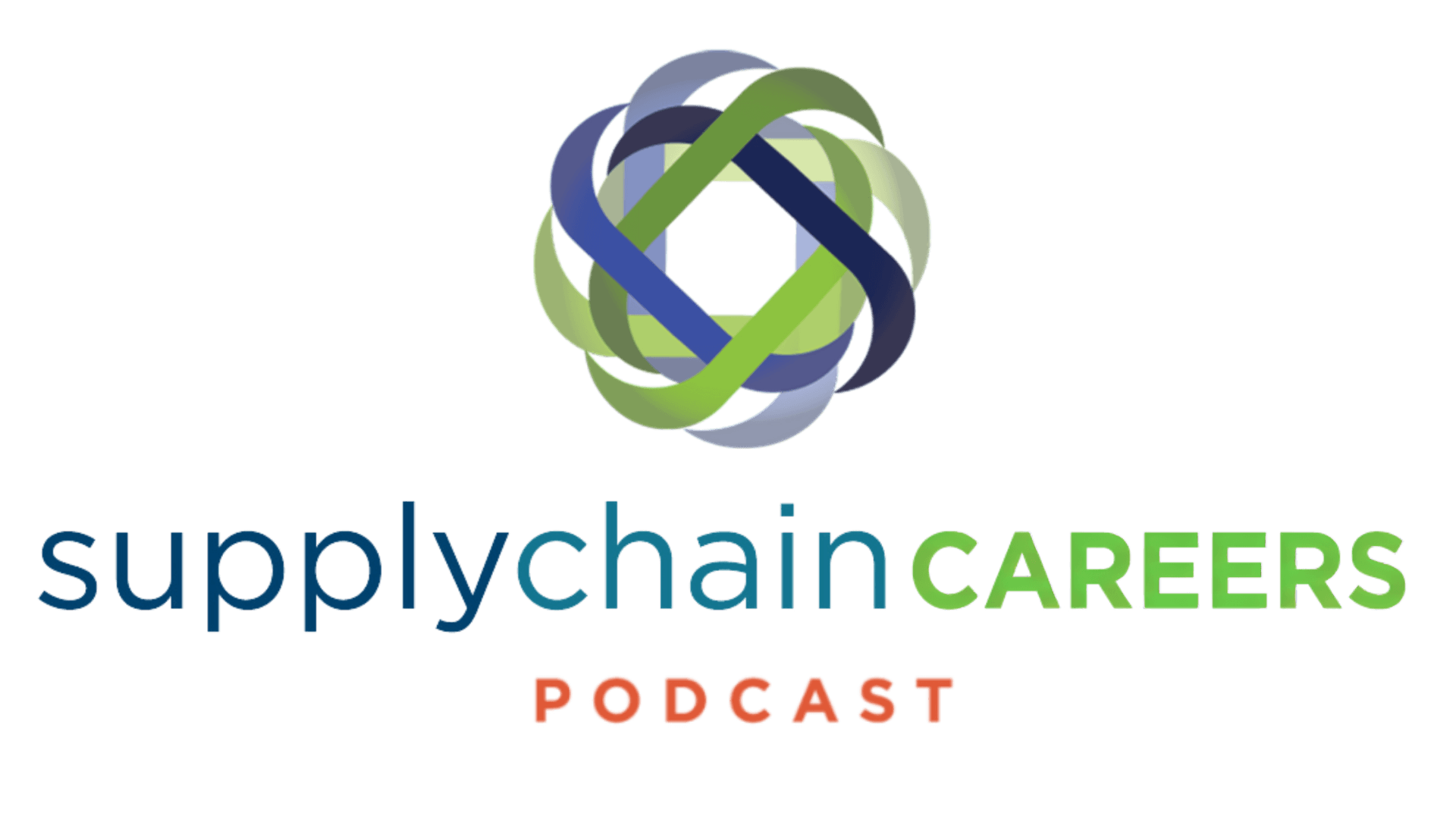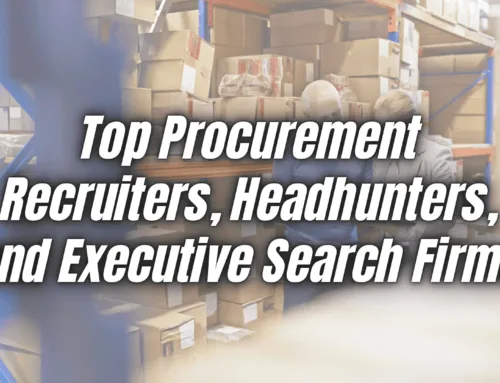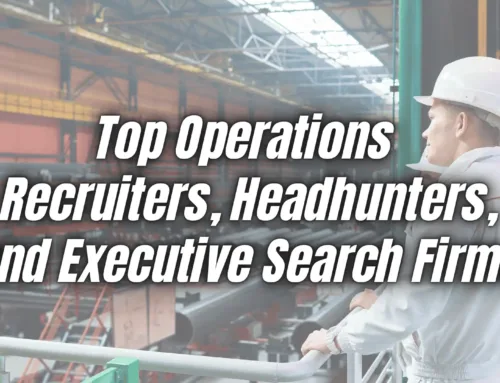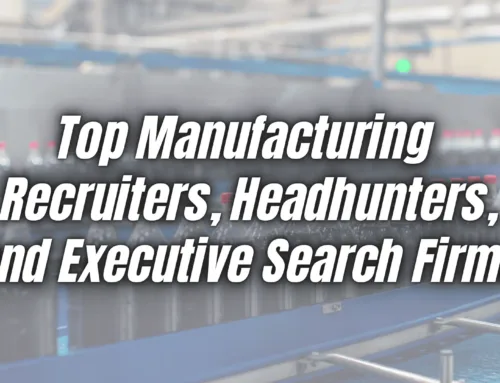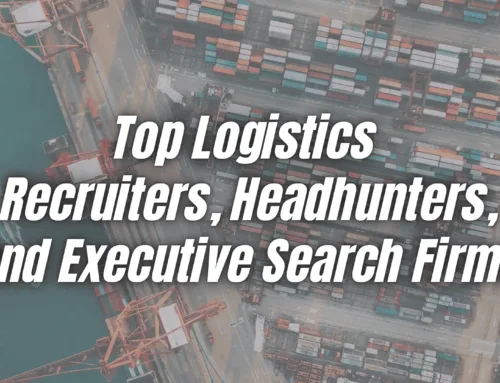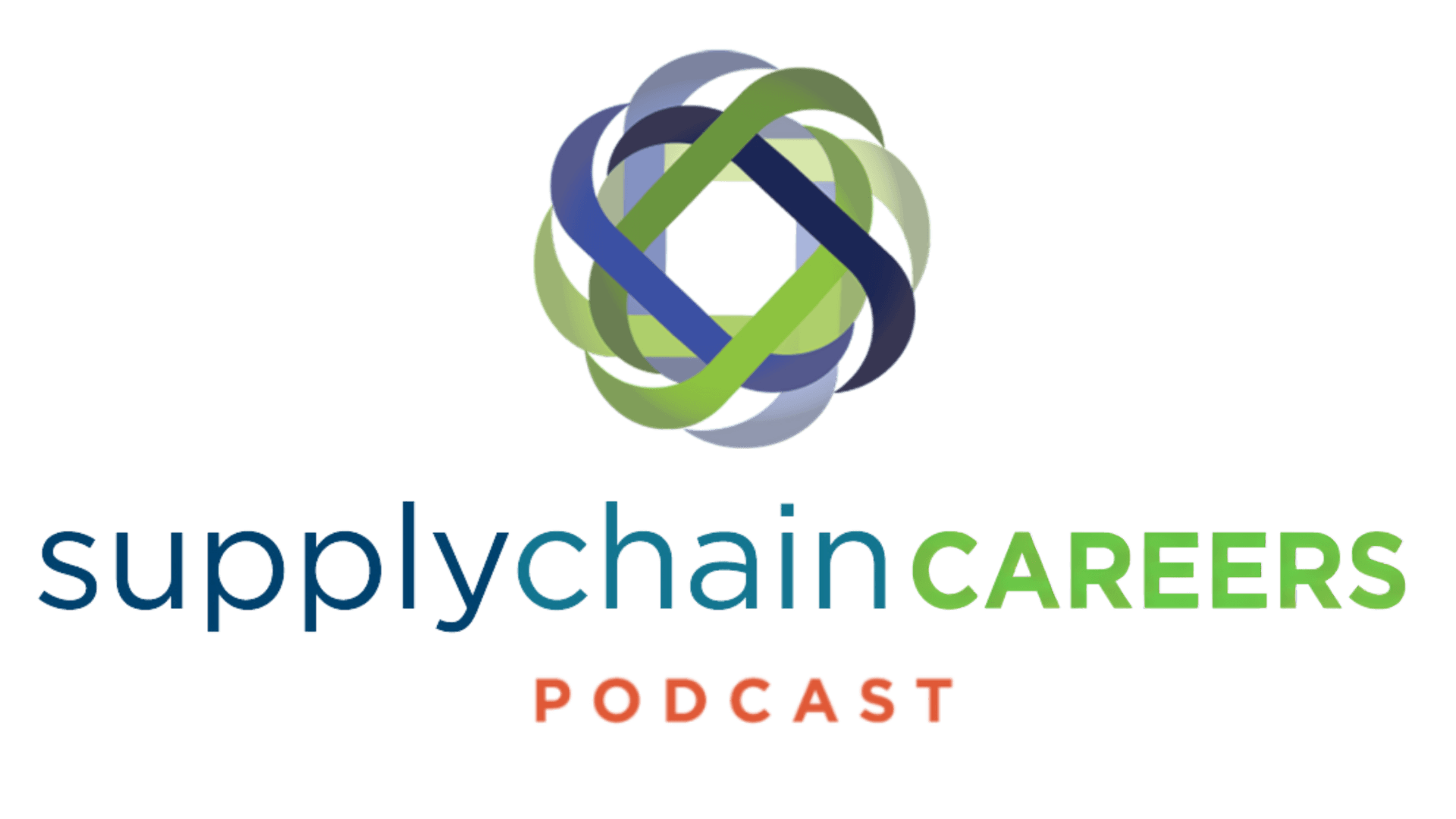The reverse supply chain is an often overlooked yet crucial component of the logistics and supply management world. With an increasing focus on sustainability and cost efficiency, this sector offers myriad opportunities for professionals passionate about making a tangible impact on both the economy and the environment. Elizabeth Maxted, a seasoned supply chain expert, sheds light on the intricacies and rewards of pursuing a career in this dynamic field.
What is the Reverse Supply Chain?
The reverse supply chain encompasses all operations related to the reuse, resale, recycling, and disposal of products and materials. Unlike traditional supply chain management which focuses on the flow of products from production to consumption, the reverse supply chain deals with what happens to products after their initial use. Elizabeth’s journey in the supply chain realm, particularly at Liquidity Services, highlights the importance of strategic management in this sector to mitigate financial burdens and environmental impact caused by waste.
Why Consider a Career in the Reverse Supply Chain?
Financial and Environmental Impact
Elizabeth illustrates through her experience at Liquidity Services how the reverse supply chain can turn a potential cost center into a revenue stream. By effectively managing the return and disposal process, companies can reduce waste and recover value from used or obsolete products. This approach not only supports financial objectives but also contributes to environmental sustainability.
Growing Market and Opportunities
The reverse supply chain market has seen significant growth, driven by consumer and corporate demand for more sustainable practices. This growth translates into diverse career opportunities in various roles, from strategic planning and operations to sales and customer relations.
Skills and Agility
The sector values agility and adaptability among its professionals. Elizabeth emphasizes the importance of being able to pivot quickly in response to market changes or disruptions, as demonstrated during the COVID-19 pandemic. The ability to analyze data and derive insightful decisions is also crucial in navigating the complex dynamics of the reverse supply chain.
What Skills Are Needed?
Success in supply chain requires a mix of technical and soft skills:
- Analytical Skills: Proficiency in data analysis and problem-solving to optimize operations and make informed decisions.
- Agility: Ability to adapt strategies quickly in response to changing market conditions or challenges.
- Sustainability Knowledge: Understanding of sustainability practices and their implementation in business operations.
- Interpersonal Skills: Strong communication and relationship management skills to collaborate with various stakeholders and manage customer and supplier relationships effectively.
Career Path Insights
Elizabeth Maxted’s career trajectory in the reverse supply chain showcases a variety of roles. Starting from research and consulting to managing large-scale operations at Liquidity Services, her journey reflects the diverse opportunities available in this field. Moreover, her transition from traditional supply chain roles into more focused positions within the reverse supply chain illustrates the potential for career growth and specialization.
Transferable Skills That Work for Reverse Supply Chain
Transferable skills play a vital role in navigating the complexities of jobs within the reverse supply chain, where the focus is on managing the flow of goods and materials back through the supply chain network. Proficiency in logistics, inventory management, and operations is paramount, as professionals must efficiently handle the return, refurbishment, and redistribution of products.
Strong analytical abilities are essential for assessing returned items, determining their condition, and deciding on appropriate disposition methods. Communication skills are crucial for liaising with various stakeholders, including suppliers, customers, and internal teams, to coordinate reverse logistics processes effectively. Problem-solving skills come into play when identifying the root causes of returns and implementing corrective actions to minimize future occurrences. Adaptability is key, as the supply chain landscape is dynamic, requiring professionals to quickly adjust to changes in product returns, regulations, and customer expectations. Additionally, a commitment to sustainability and environmental responsibility is increasingly valuable, as companies seek to minimize waste and maximize the value of returned products.
Use of Talent Professionals in Reverse Supply Chain Jobs
Entering the reverse supply chain field requires a combination of education, experience, and networking. Many professionals & students start by obtaining a degree in supply chain management, logistics, operations management, or a related field. Internships or entry-level positions in logistics or supply chain roles can provide valuable hands-on experience. Building skills in areas such as inventory management, logistics, and process improvement is essential.
Networking is also crucial for finding opportunities in supply chain. Attending industry events, joining professional associations, and connecting with professionals already working in the field can lead to job and mentorship opportunities. Online platforms like LinkedIn are valuable for networking and job searching.
Using a supply chain recruiter can streamline the job search process and connect candidates with relevant opportunities. Supply chain recruiters specialize in sourcing talent for roles in logistics, procurement, and supply chain management. They have extensive networks within the industry and can match candidates with positions that align with their skills and career goals.
For employers, using a supply chain recruiter can save time and resources by outsourcing the recruitment process to experts who understand the unique challenges and requirements of roles in reverse logistics. Recruiters can efficiently screen candidates, conduct interviews, and present a shortlist of qualified candidates, allowing hiring managers to focus on their core responsibilities.
Furthermore, supply chain recruiters often have access to passive candidates who may not be actively seeking new opportunities but are open to considering them if the right opportunity arises. This expands the pool of potential candidates and increases the likelihood of finding the best fit for the role.
Overall, leveraging the expertise of a supply chain recruiter can benefit both job seekers and employers in the reverse supply chain field, facilitating successful matches and advancing careers.
Salary Ranges for Reverse Supply Chain Pros
Salary ranges for roles in reverse logistics and the reverse supply chain vary based on factors like experience, location, and company size. Entry-level positions, such as Reverse Logistics Coordinators, often start around $40,000 to $50,000 annually. With a few years of experience, salaries can range from $50,000 to $70,000 for roles like Reverse Logistics Analysts or Supply Chain Planners. Mid-level managers, such as Reverse Logistics Managers, can earn between $70,000 to $100,000, while senior-level executives, like Directors of Reverse Supply Chain, may command salaries upwards of $100,000, potentially exceeding $150,000 in larger companies or metropolitan areas.
Conclusion
The reverse supply chain offers a rewarding career path for individuals looking to make a significant impact in both business and environmental sustainability. As companies increasingly prioritize circular economy practices, professionals with the right skills and a passion for sustainability can find numerous opportunities to advance their careers and contribute to a more sustainable future.
If you are intrigued by the challenges and opportunities in supply chain, this might be the right career path for you. It’s a sector that not only demands innovative problem-solving and strategic thinking but also offers the satisfaction of contributing to environmental sustainability and economic efficiency.
Mike Ogle: [00:01:39] Elizabeth, we’re happy to have you with us today. Welcome.
Elizabeth Maxted: [00:01:42] Excellent. Thank you so much for having me, Mike.
Mike Ogle: [00:01:45] How did you get started in supply chain? What were some of your greatest influences?
Elizabeth Maxted: [00:01:50] Sure. I received a business degree from Wake Forest University in Winston-Salem, North Carolina, and I’m nearing about 20 years of my professional career here, but I think like everyone else, supply chain exposure in your university education was probably pretty standard. It was the basics of factories making widgets and moving them about nothing terribly exciting. My career actually began at Corporate Executive Board. It’s actually a hybrid, best practices, research consulting firm based in Washington, DC, they’ve since been acquired by Gartner Research.
We had several research disciplines at Corporate Executive Board. Research that helps CFOs or Chief Marketing Officers. And there was a discipline in procurement supply chain and operations that always fascinated me. They produced research and best practices around how to build supply chains to withstand disruption, or digital innovation, demand planning.
So that was my early exposure to supply chain, but really my supply chain career began in 2009 when I shifted over to Liquidity Services where I currently am. Liquidity is a publicly traded, high growth kind of supply chain company. And they are focused in the reverse supply chain space. And I was very unfamiliar with the term reverse supply chain when I first started there. When you think supply chain, you immediately go towards, you’ve procured materials, manufacturing, distribution, logistics, to try try to reach end consumers, stores or partners, but the reverse supply chain is considered at the very end of that whole process. So, Liquidity Services focuses on a very small part of the overall supply chain picture. But ironically, what I came to learn when joining Liquidity is it can be a real, huge financial burden if this whole reverse part of the supply chain isn’t planned for, and it can create a lot of waste. Conversely, this part of the supply chain quickly has proved to be an opportunity, especially for Liquidity who entered this market in about 1999 to apply really sustainable strategies and try to generate some revenue in it, to offset the larger costs that can be impacted for companies.
As a side note, my sister and brother-in-law and I started a real small boutique online shop when Amazon started doing drop ship fulfillment. We started our own online business and I quickly learned that one of our greatest financial challenges was the cost of absorbing returns. We ended up with a closet full of product that started to build up. We’d never planned for that, or understand that the pain point both physically and financially, that brought to us.
To use a simple consumer example, there are grocery stores that have items on the shelf that are about to expire within 60 days or department stores that have clothing and toys or seasonal goods that are now out of season. If we shift that to a larger example, governments have big fleets of cars, and despite there is a contracted timeframe for them to upgrade, there’s plenty of life left in the cars that they currently have. As probably the more complex example, which is where my job currently focuses, if you think about the iconic images of a traditional car manufacturing engine line, you would think about Ford and there was a car partially moving down a slow rolling line and people quickly moving in and out and welding parts to it. Traditional car engine has over 500 parts, but as we shift, kind of globally towards more hybrid or electric engines, they sometimes have anywhere from 25 to a hundred or a small couple hundred parts. So, what happens to all that machinery or robots that are still very useful? These assets can be transitioned into any number of industries. So, whether it’s a simple consumer good example or machinery, there is a common challenge here, which is unplanned surplus can be a real burden on supply chains. And really instead of just going to recycling or disposing, there’s an opportunity here and businesses are evolving to source more sustainably, reduce carbon emissions, or remanufacturer, repair things all before you would get to recycling.
When companies start to place more emphasis on their end of supply chain, again, the reverse supply chain, we can do good in both the economy and the environment. That’s how I got started in the supply chain and what my greatest influences are, which is I am passionate about the circular economy. It’s certainly influenced my career, wanting to champion it, shine light on what it is and make it more formal solution or more formal part of the overall supply chain picture.
Chris Gaffney: [00:07:00] So Elizabeth, what is different about the circular economy, the industry around it, that Liquidity Services operates in. And for people who have interest in that world, what kind of skills are needed, both individually team-wise hard skills, soft skills, what are the kinds of things that make the difference for people working in the reverse supply chain versus typical supply chain roles?
Elizabeth Maxted: [00:07:25] Sure Chris, I think it’s first important to differentiate and define a little bit about what the circular economy is. A traditional linear economy is when we take materials that are taken from the earth to make a product and eventually thrown away as waste. So, there was the take, make, waste kind of concept there in a linear economy. The circular economy, we take those products when we make something and then we try to keep them in the economy and breathe new life into them instead of moving them to a landfill. So, Liquidity Services, our kind of role in this space, is we try to facilitate the reuse and redeployment of inventory, equipment, and just general surplus assets. We try to help companies move them from one location to the other and get better life out of them within their own footprint. And if we have to, we take that equipment outside their footprint and we extend its life by selling it to a new user in what we call the secondary market.
The circular economies model benefits both the environment in a way that the linear economy didn’t. And again, Liquidity Services, whole objective and business model is to say, how can we help large companies identify where there ends up being surplus in their supply chain? Again, usually at the end of again, this reverse space. We’re looking for surplus in their supply chain across any section. And then we manage them down a path towards what’s best, again, redeployment reuse, or selling it externally. And we try to help provide an estimation of value when we are reselling it into the secondary market. We like to see ourselves as a real engine here inside the circular economy.
And you asked a second part, which is, what skills for people looking to get into this sector. And what I’d say is agility is the number one answer. If we think that this pandemic demonstrated how fragile the global economy supply chains are. COVID impacted every industry. And every industry had to pivot, and be agile. Companies were trying to figure out how to do less touch, and less interaction to get to their customer. Liquidity specifically saw about a 23% increase in registered buyers in 2021. And this increase proved to us that there was an acceptance of this whole kind of circular thinking. We already had an e-commerce model, but I think the acceptance of a secondary and circular economy was really evident in 2021. Other key skills I think are just tremendously important is, how do you use data. As the amount of data increases that’s available to us, where is the analytical problem-solving mindset that you can use to interpret data and make a change, monitor something’s going right. Monitor if it’s not going right and make a change. So how you actually analytically interpret data is a huge skill. So, I think really that the answers here are agility and your ability to use data, I would say are critical.
Mike Ogle: [00:10:47] And so Elizabeth, we’d like to have a little bit more background, just trying to understand how you get to this point. We do a lot of work on career paths and trying to understand how people get to where they are in supply chain, and like to learn a little bit more about some of the positions that you’ve held and some career lessons that you learned during those transitions between positions and levels of responsibility.
Elizabeth Maxted: [00:11:10] Sure. And nearing almost 20 years now, I’ll focus on my recent two roles. My current position is General Manager for our Capital Assets Division here at Liquidity Services and North America. Of course, we handle government surplus, some retail, but industrial capital equipment. An example of that is like Volvo swapping out their manufacturing lines to prepare for all electric hybrid or Merck and BMS who have very large research and development and manufacturing laboratories for pharmaceuticals. When these companies upgrade their capital equipment to keep their supply chains running efficiently and optimize, we moved their surplus equipment into the secondary market. And I currently oversee and responsible for general management of that function. Prior to that role, I actually spent three years managing Liquidity Services international business based out of London. I moved my young family and two kids. We all went over there and had a very interesting experience there internationally. Hands-on it’s so important and supply chains are incredibly global and to see operations throughout all of Europe was very important.
And before that, I spent some time in our retail sector, clients like Best Buy, Target, Walmart, helping them optimize solutions for excess consumer inventory like overstock or returned inventory. Each of these big changes both internationally, and my current role have just been in the last six years of my 20-year career here. Both of these two recent moves required new decision-making skills, something that I didn’t have the experience in quite yet. So, it can be real easy, speaking to my younger self or people early in their career, it can be easy to doubt yourself at some of these larger roles that you’re looking at stepping into. But it’s more about the solid track record, some good results, some foundational decision-making skills. I believe in quantitative based skills, being collaborative, things like that, are really important to bring with you as you take on new roles. But the lessons for me as I’ve changed positions are that, there’s a famous quote growth begins outside of your comfort zone and it’s true. You kind of have to push yourself into these new roles. And I would say to do that, you have to push yourself in the current role that you’re in. You got to show initiative, you have to have very foundational tools before you take that next job. I would also encourage young people in their career to try lots of different strategies. Bring ideas to the table. Businesses and teams are hungry for ideas. The other thing that they’re hungry for is measure. Measure something and then do more of what’s working and abandon those things that are not working. And once you do that, keep trying new strategies. I think that’s kind of key lessons that I’ve taken with me throughout changing these different roles in my career recently.
Chris Gaffney: [00:14:17] Your business clearly is a relationship business cause you’re working on behalf of so many partnerships and stakeholders to get things done. If you think about some of those key partnerships, such as external suppliers or customers, what’s critical in terms of how you work with them to make those successful relationships?
Elizabeth Maxted: [00:14:39] Good question. And I’d say with any relationship, a supplier or customer, knowing the limits of your expertise and recognizing when you have to bring in external expertise, like a subject matter expert is critical. Without that awareness, you, as a supplier can stumble. When you don’t have to really. The worst position to be in, especially as a supply chain professional, is over promising and under delivering. So, I have a couple of key rules that I kind of stick by to manage relationships. One is if we can be more successful for our customer in their outcome, by collaborating with an expert, we should do that. This kind of gets back to my knowing your limits. And secondly, using data to quantify what are perceived as big or small issues is so critical. Humans can be incredibly emotional. Data helps brings more facts than feelings. So those are my two key rules when thinking about how to manage those relationships.
Mike Ogle: [00:16:14] Elizabeth, what is your philosophy on mentorship and how would you advise someone that is seeking out their first mentorship?
Elizabeth Maxted: [00:16:21] I believe that mentorship is incredibly important in our careers. Time really is the most precious resource for an experienced professional. So, as you seek your first mentorship, be productive with the time that they give you. Oftentimes, it’s not uncommon for young professionals, just expecting answers to be laid out for them. And that’s not what mentorship is. If you think of yourself on a sports team, there’s outstanding player. You want to learn from them. So, you make observations about how they practice. You motivate each other, share insights, but at the end of the day, you still have to play the game yourself. No one can play it for you. Mentorship is similar in that respect. A couple of thoughts here. Bring questions that you want to talk about, that you can’t answer yourself or you’re looking for a different perspective. That’s really important. Mentorship also takes time. So often we feel rushed. There’s always deadlines. We’re always looking to accomplish something, but mentorship is a journey. So be patient with it. Another thought is for someone early in their career, your goal should be to maximize your current role and experience, stretch yourself, make observations about your function and how it contributes to the business. Again, what’s working, what’s not. And approach mentorship with a desire to learn and connect, to enhance where you currently are and think of and help think through paths for where you could be. And lastly, I’ve had mentorships that have been both formal and informal and I would say, they don’t always work and that’s okay. If you feel like you’re in a very forced situation, it’s not working. That’s okay. We’re all professionals, recognize that and try to make the switch.
Chris Gaffney: [00:18:08] That’s great advice. Ironically, my experience has been the ones that have endured most have been the informal, but I think that’s a great perspective. I’d also like to dig into your thoughts on leadership. I’m curious whether you have key characteristics that have really helped you when you were led by an exceptional leader. And as well, how you apply them when you’re working with folks on your team or larger teams that really have proven critical for you and your industry.
Elizabeth Maxted: [00:18:38] Leadership is so critical. There was a quote, it’s not only what you say, but how you say it. And when you say it that your message is absorbed. It makes the difference in your career, certainly. And I’ve been blessed to have several really positive leaders. One of my key takeaways is a simple concept that measure what matters. If it’s not measured and there’s no goal, how do you know something’s working? Or how could you identify where to make further improvements? Measuring and setting that course as well as a goal is so critical for leadership, and helping people understand the goal, not just a number, but the why behind it is important for leaders to do.
There’s also a philosophy I have in conjunction with measurement and measuring what matters, is relying on willpower is really hard, but it’s actually discipline that sets you free. Chris, you were talking about being a runner, just throwing yourself out there is tough, but being disciplined and having a schedule actually sets you free about that and sets your own personal expectations about when you’re going to go out and how far you’re going to run. It’s the same in business. When you’re disciplined about what you’re measuring, you produce a consistent report. Your meetings are predictable. The content is expected and delivering that type of consistency, especially in the supply chain is important because without discipline applied to your job, you can invite some unpredictability. Even chaos. And no one in the supply chain likes that. Especially as you start engaging upper management. So, measure what matters and be disciplined about it. Those are really important leadership lessons that I’ve learned along the way.
A good balance of needing to be disciplined and measured and welcoming that kind of full free form. It needs to be a balance, but I think discipline is the good kind of foundational piece to it. Free form is still a necessary part. We can’t control everything, right? So, there’s an element of control what you can control and then, be agile and prepared to solve something that you didn’t expect.
Mike Ogle: [00:20:59] What you said that definitely makes sense is there’s already enough chaos and uncertainty in supply chain. If you’re not comfortable with that to some extent, then maybe it’s not for you. It’s really good advice to be able to put as much predictable discipline in there as you can.
And so, Elizabeth, everybody talks about continuous improvement of their operations, but how do you actually apply continuous improvement to personally improve your own career? What do you read? What kind of events do you attend? How do you utilize your network to continuously improve your career?
Elizabeth Maxted: [00:21:39] It’s a good question. And you’re right. All, all three of those things are important parts, reading, attending, leveraging your network. Those are the building blocks. Currently I’m reading this fascinating book by Adam Grant called Think Again, and it encourages you to seek really counter views or evolve your own thinking. Almost trying to unlearn some of your current information that you believe is accurate. It’s trying to train you to always think of a counterpoint. It’s fascinating. Another interesting book I’m reading right now is called Atomic Habits, but I think, trying to keep yourself informed with a handful of books is certainly required as we grow our careers.
This one may come as a surprise about continuous improvement in my career, but I recently relied on mindfulness techniques or even, meditation is evolved from that. And really with the current form of information our brains process, something like 75 gigabytes or billions of bits of information a day, our brain actually is exposed to them and then is working hard to filter through all of that and determine what’s important to pay attention to or immediately throw out. We have to almost work professionally to train our brains to clear the mechanism. We have to stay sharp and clear. And so, there’s lots of really cool apps out there right now, like Headspace or calm, or even Peloton has a meditation section. And these are, I think really important resources. So that’s certainly helped me stay sharp of mind.
And then as you mentioned, events. These are critical. Just to name a few. There’s the Investment Recovery Association in our sector. The Retail Industry Leaders Association, groups like WBR Research put on key trade shows around consumer returns or Procure Con. One of my favorite organizations is called Procurement Leaders. They cover really important topics in our industry.
And it’s important for you to attend different trade shows in your broader supply chain sector, because these are designed to bring you speakers, to help keep you current of what’s happening in the industry. Emerging vendors are there and ready to educate you on how they can further support your core solution. So, absolutely, events should be part of your regular, professional, continuous improvement.
Chris Gaffney: [00:24:04] Your business is clearly a team game and you mentioned some athletic experience in college. So being part of teams is critical. And obviously leading teams is a great art form as we watch sports, we see a lot of coaches come and go based on their leadership. In your mind, what separates good from great when it comes to building a high performing team, whether that’s attracting talent, developing, retaining folks. What is your thought on that? And also, how do you evaluate talent?
Elizabeth Maxted: [00:24:35] A high-performing business functioning team is not unlike a top ranked athletic sports team. I had an athletic career at Wake Forest. It was a division one, ACC women’s sports team. And we made it all the way to the final four, which was something I’ll never forget. And the whole experience that led up to it. Here would be my advice. Again, this has a strong sports parallel to it, but hire people who are not like you, literally, you want people to bring different skills and perspectives. The sports team isn’t looking for 11 center midfielders for their soccer team. They’re looking for diversity, a goalie, strikers, defenders. So, hire for different diversity. The other thing that I have a strong personal belief in here is that attitude is everything. Teams only function in environments that are collaborative in communication. You can’t have one person running around solo out there. You have to function as a unit. And I’m always looking for this element when I’m hiring. I believe people can be taught content or certain skills, but attitude’s more ingrained. That’s much harder to change. Attitude for me is a huge element when I’m hiring. And ironically development is tough. Young professionals, again are absorbing a lot from books or classrooms. And experience takes time. So, the bigger company you’re with, the more formal training programs do exist, but I would just say as more smaller companies arise, there’s a lot of opportunity here. So, anybody under a billion dollar, I would say, be prepared to have more organic development, opposed to real kind of professional programs.
I personally was always coached towards act and perform for the job you want, not the job that you have. Some advice here when, again, hiring, developing and retaining is solve for your own job. 100% that’s table stakes, but offer to step up, offer your insights and observations, offer to travel, offer to help out on additional challenges that the companies having. You’ll meet new colleagues and stakeholders by extending yourself and showing that initiative. And with that type of initiative, attitude and work ethic, oftentimes I find that you’ll be tapped on the shoulder for promotion instead of having to apply for it. So, hiring is critical. Development looks very different from high-growth small organizations to bigger established companies. And it’s all about that initiative and attitude.
Chris Gaffney: [00:27:12] Those are great points. I would truly underline both of those points. I think that experience learned in application is the best way to retain it. And I think to your point, creating space by being exceptional in your job, but being available to do more is something that I learned along the way, and I think that’s just platinum advice, so that’s great.
Elizabeth Maxted: [00:27:35] It’s funny cause I think there’s so much emphasis for people early in their career right now to ask for the promotion. And go for that new job. But I always say you have to be knocking out of the park with results in your current job and try to extend yourself beyond that. There is such an emphasis on climbing and growing responsibility right now, that experience is like you said, it takes time. There’s some patience there that has to be applied.
Mike Ogle: [00:28:08] And Elizabeth, do you have one or two examples for instance, that a, that you’re going to go into maybe a challenge that you had faced and how you dealt with it?
Elizabeth Maxted: [00:28:16] There’s an inherent element of chaos in all supply chains, so who hasn’t been part of a supply chain that hasn’t endured some major challenges. These are tough. They’re often financially hugely impactful and incredibly time-sensitive, which are tough constraints to work under. But I was thinking about, do I go into a very specific scenario or not? And I think, I’d rather just lean in on what were the key takeaways? What are the lessons, or pointers I would give somebody who inevitably is going to be part of a chaotic situation in the supply chain. And my answer is it’s pretty simple. Use data to quantify how big or little the challenge is, what the financial exposure is, use data. And secondly, use KPIs and measure things along the way to be early indicators of warning in order to keep you on track, in order to minimize or foresee a problem coming. If I’ve known anything, working at a public company, is executives and board members don’t like being surprised. So how are you measuring things to keep your business on track, and anticipate and have early warning signals associated with these.
Chris Gaffney: [00:29:34] Elizabeth, one thought I have having worked at Coke and we worked in kind of an extended producer responsibility. So, we try to be thoughtful when we design products to minimize their impact on the environment and think about the circular elements. What advice do you give your clients so that they can actually minimize what has to come into your operation on their behalf?
Elizabeth Maxted: [00:29:57] That’s a great question. You’re essentially asking almost like preventative of surplus and I have observed in setting up several corporate investment recovery programs. Engineers, facility management, procurement teams, and finance all have a view towards thinking about specifically manufacturing inventory. When there is a planned retirement of whether that certain packaging line, a certain product, et cetera, there’s planned retirements phase out, whether that be for technology upgrades or again, changing consumer behavior. And I think just building in planning earlier through multi-functional team solving would help reduce surplus overall. So that would be one finance facilities, management, engineering, and procurement. When you’re buying and making things keep in mind, what if they’re a surplus and how do we plan for that? The second part is, there’s great enterprise wide visibility towards capacity. So, if one manufacturing plant has slower production for various reasons around the globe, somebody else steps up to fill that gap. It’s the same concept with surplus. How do you consistently provide enterprise wide visibility towards surplus equipment inside your facility so that somebody else could make use of it first? So, before we think about recycling or moving it outside or scrapping something, how do we more consistently provide enterprise wide visibility internally and make sure that we’re using it to a greater extent ourselves?
Chris Gaffney: [00:31:43] No, that’s fantastic. I would say one thing I learned in designing and implementing new projects that required capital was to be very careful if we were installing a piece of capital that could only do one thing because you were very dependent on the success or failure of that product. So, we really try to just say, how do we provide flexibility when we’re building in machine capabilities? So that’s huge insight. So, thank you for that.
Mike Ogle: [00:31:07] As we close out our conversation today, I wanted to ask do you have some pieces of advice to students that are thinking about careers in supply chain and in particular, the circular economy?
Elizabeth Maxted: [00:32:20] I do. I carry two very foundational pieces of advice with me, for both my younger self and for students graduating or people earlier in their career path. Number one, be curious. Try lots of things. Try lots of jobs, ask questions. If you have the opportunity to intern for even three to six weeks, take it and see what you like.
And this leads me to my second piece of advice, which is also find out what you don’t like. Realizing what you maybe aren’t passionate about or applying your best skillset is equally important. Everyone focuses on trying to find what they like, or they’re good at, but you have to eliminate things that you don’t. These are not failures. They are learning opportunities to help you move closer to the thing that does excite you. I have two young boys and a coach of theirs said to them recently, I want you to think of failing as your first attempt in learning. And I love that. I think we should bring a lot more of that to the early part of our careers, the first five and even 10 years before you feel like you really settle into matching your skillset and something that you like. So, try lots of things and anticipate that you may not like them. And that’s okay.
As it applies to the circular economy, this is a sector of the supply chain that is growing. Companies and consumers care about sustainability of supply chains. This whole circular economy is a new part of it. And there’s a lot more emphasis on sustainable sourcing or reducing carbon emissions, even re-imagining packaging. Be the innovators, come help us solve it. There’s an entire new secondary market in retail that is evolved, and I think the pandemic even further expedited it. There’s an opportunity here to continue driving the circular economy.
Mike Ogle: [00:34:17] Elizabeth, thank you for a great conversation and your insights about supply chain careers.
Elizabeth Maxted: [00:34:23] Delighted to be a part of the process. And thank you so much for having me on Mike.
